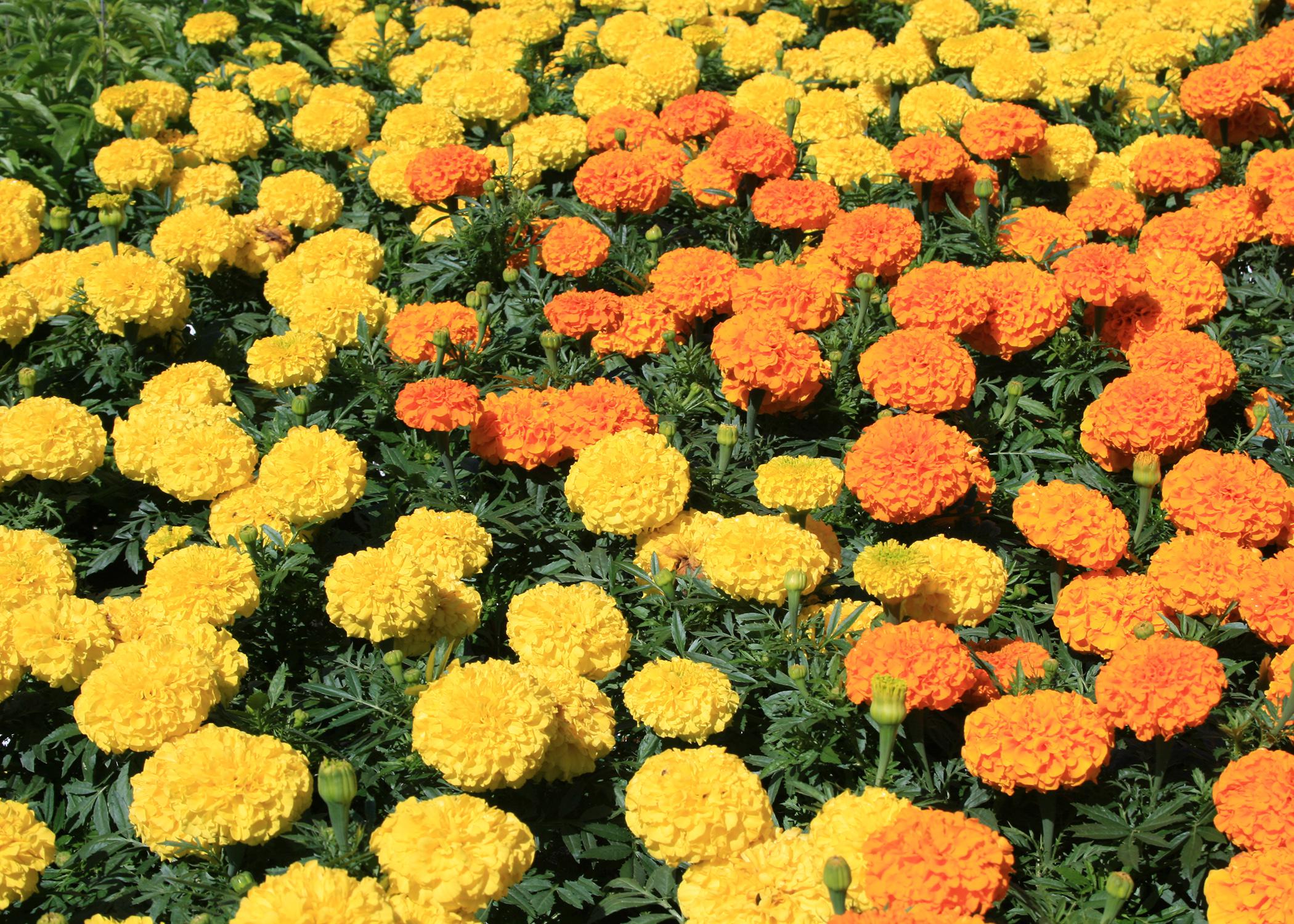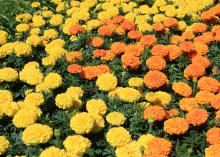Information Possibly Outdated
The information presented on this page was originally released on August 25, 2015. It may not be outdated, but please search our site for more current information. If you plan to quote or reference this information in a publication, please check with the Extension specialist or author before proceeding.
Mari-mums are fall-flowering marigolds
Where did the summer go? I know it’s still hot and will be for the next month or so, but September starts next week, and that means fall will officially begin.
What prompted me to start thinking about the season change was a weekend visit to the garden center. I noticed there were some new additions to the colorful benches. There were lots of the yellows, oranges and rusty reds of one of my long-time summer favorites, marigolds. Marigold colors are earthy and warm -- just what is needed for a harvest display.
There are American and French marigold types available. The American marigold, also called the African marigold, has various series that range in size from 15 inches to more than 3 feet tall. American marigolds are recognizable for their pom-pom-type double flowers. Choose smaller-growing varieties for fall planting.
My go-to for fall transplanting is the French marigold, which is inherently smaller but has more flower variety, including striped flower petals. There are single as well as double flowers, and the plants generally are less than 15 inches tall. French marigolds are free flowering from early summer to frost, but you may have to deadhead to remove faded flowers.
As with any landscape planting, prepare the full sun planting beds by working in good quality compost. This amendment improves the water-holding capacity so you have consistently moist soil. Since the fall season is relatively short, sprinkle in a three- to four-month controlled-release fertilizer. When growing in containers, use a good quality container potting mix.
An advantage of planting marigolds in the fall is the reduced incidence of spider mites, which can be troublesome in the hot summer months. With the fall cooling down, the mites may be present, especially if we have drought conditions, but their reproductive rate will be greatly reduced.
Mari-mums are good companions for the cool-season color we are also planting at this time. Combination plant your favorites with the colorful flowers of viola, pansies or Sonnet snapdragon, or interplant with the cool-season foliage of ornamental pigeon cabbage or the dark burgundy red foliage of Redbor kale.
So keep your fall flowering mums in big containers on the porch and patio, but add some mari-mums in smaller containers or in your landscape beds to celebrate the harvest season.





